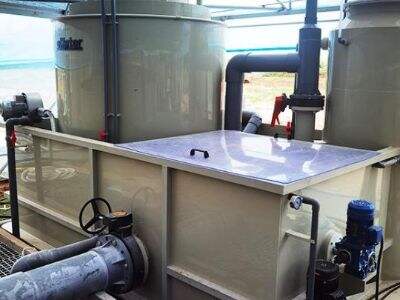Aquaculture is a special fish farming method. Aquaculture was traditionally performed in natural environments such as lakes and rivers. But there is a new paradigm for aquaculture, Recirculating Aquaculture Systems (RAS). So what is unique, or different, about RAS compared to traditional aquaculture? Let's find out!
Commercial RAS: The Role of Clean Water for Fish
In commercial RAS, they use dark machines that circulate the water so that the fish constantly has access to clean water. This is crucial since fish require purified water to remain healthy and grow large. In a commercial RAS, machines constantly sample the water and adjust when necessary. This helps the fish have a happy home!
The Environmental Benefits of Commercial RAS
With its responsible usage of Earths resources, commercial RAS is good for the planet. Unlike traditional aquaculture, which wastes a lot of water, commercial RAS recycles water. Meaning less water is used which is preferable for our planet. Also in commercial RAS, less fish waste is sent into the water, helping to mitigate pollution. It's basically like looking after our fish friends and the planet at once!
How Commercial RASs Produce Fish Year-Round
In commercial RAS, fish farmers can manage the surroundings in which the fish reside. They adjust the temperature, the amount of oxygen and the light to ensure the fish are comfortable. This allows the fish to grow more quickly and healthily. And because commercial RAS are indoors, they don’t have to rely on the weather. It means that fish can be harvested throughout the year, supplying fresh fish for those who love to eat them!
Comparative Costings of Commercial RAS and Conventional Aquaculture
Commercial RAS is a cost-effective solution While the initial setup of a commercial RAS is likely more expensive, it can be cost-effective for the long run in terms of water, energy, and manhours in the operation. Moreover, because commercial RAS allows fish to grow faster, farmers can sell them sooner, leading to higher profits. For fish farm business expansion, this makes commercial RAS the smarter option.
How PSARS Can Adapt to Meet Commercial Needs
Aquaculture systems RAS is versatile and can alter production of fish to match human demand. Fish farmers have a relatively easy time adjusting the number of fish they farmed when people want their fish more or less. Commercial RAS can also raise other types of fish, providing farmers with choose what to raise that people like to eat. Magic fish farm that can do anything!
The bottom line is that commercial RAS is a new form of aquaculture. It applies technology to care for environment, generate good fish, save cost and fulfill market demand. Commercial RAS allows the aquaculture industry to expand and supply high-quality fish to consumers year-round. (See EWater for more info on commercial RAS) Happy fish farming!

 EN
EN
 AR
AR
 BG
BG
 HR
HR
 CS
CS
 DA
DA
 NL
NL
 FI
FI
 FR
FR
 DE
DE
 EL
EL
 HI
HI
 IT
IT
 JA
JA
 KO
KO
 NO
NO
 PL
PL
 PT
PT
 RO
RO
 RU
RU
 ES
ES
 SV
SV
 TL
TL
 IW
IW
 ID
ID
 SR
SR
 UK
UK
 VI
VI
 HU
HU
 TH
TH
 TR
TR
 AF
AF
 BN
BN
 LO
LO
 LA
LA
 MY
MY
 UZ
UZ

